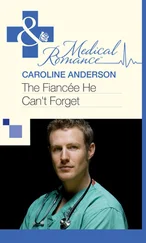The big failing in present measures of narcissism is their singular focus on the right—mostly the far right—side of the spectrum. What’s more, no other test captures the deficits in healthy narcissism, on the left side of the scale. To address these shortfalls, I and my colleagues, Dr. Stuart Quirk, professor of psychology at Central Michigan University and doctoral candidate Shannon Martin, created a new assessment tool called the Narcissism Spectrum Scale (NSS). To ensure its accuracy, we’ve collected data from several hundred people, young and old, male and female, rich and poor, from all around the world, for a far more representative sampling than the typical college study.
The original NSS consists of 39 questions. To make it easier for people to take on their own, we’ve narrowed it down to 30 items and simplified the scoring system, which you’ll find at the end of the quiz. We call this abbreviated version of the NSS the Narcissism Test. (For more information on the development of the NSS and the preliminary research supporting it, see the references at the end of the book.)
Go ahead now. Get out your pen and get to it. If you’re feeling especially brave, and want to get a really clear idea of where you fall on the spectrum, give the measure to a close friend or your partner and ask them to rate you. Other people often see us far more clearly than we see ourselves.
On a scale of 1 to 5, indicate how much you agree or disagree with each item, using the guide below.
| 1. |
Compliments make me uncomfortable. |
______ |
| 2. |
It irritates me when someone gets ahead by being the star. |
______ |
| 3. |
I’ve missed out on opportunities because I was uncomfortable nominating myself (e.g., for promotion or leadership position). |
______ |
| 4. |
Sometimes I won’t state my ideas because someone else’s will be better. |
______ |
| 5. |
I often defer to other people’s opinions. |
______ |
| 6. |
I worry about how other people think and feel about me. |
______ |
| 7. |
I’m not sure what I want or need in relationships. |
______ |
| 8. |
When people ask me my preferences, I’m often at a loss. |
______ |
| 9. |
I blame myself whenever things go badly in a relationship. |
______ |
| 10. |
I apologize a lot. |
______ |
| 11. |
I’m self-confident, but caring. |
______ |
| 12. |
I press on, even when tasks are challenging. |
______ |
| 13. |
I take more pride in my achievements when I have to work hard for them. |
______ |
| 14. |
I can recognize my limitations without feeling bad about myself. |
______ |
| 15. |
I’m happy to acknowledge my faults if it improves a situation. |
______ |
| 16. |
I believe both partners contribute to the success or failure of a relationship. |
______ |
| 17. |
I can rein myself in when people tell me I’m getting a big head. |
______ |
| 18. |
I like to dream big but not at the expense of my relationships. |
______ |
| 19. |
I’ll take giving over receiving any day. |
______ |
| 20. |
Despite setbacks, I believe in myself. |
______ |
| 21. |
* * © 1987 American Psychological Association. Adapted with permission from Emmons, R. A. (1987). Narcissism: Theory and measurement. Journal of Personality and Social Psychology, 52(1), 11–17. Further reproduction/distribution prohibited without written permission of APA. Narcissism Deficits (ND): Add items 1–10 and enter your score here: ______ Healthy Narcissism (HN): Add items 11–20 and enter your score here: ______ Extreme Narcissism (EN): Add items 21–30 and enter your score here: ______ Understanding Your Score The scale breaks down into three “factors.” Think of these like three large piles the items fall into mathematically. All three are related to narcissism (or the lack of it). But they predict dramatically different patterns of behavior. Each factor is also a rough indicator of different positions on the spectrum. As you can tell by the name of each score, the first total represents your placement on the left the spectrum, the second reflects your tendency toward the center (or healthy narcissism), and the third gives you a rough sense of how far you are to the right. As you can also probably tell, the only factor it’s good to score high on is healthy narcissism. That’s because we designed the scale to mirror the spectrum. It’s the extremes (too little and too much narcissism) that cause all the trouble. Here’s a quick guide to what your scores mean. The Narcissism Spectrum 0 1 2 3 4 5 6 7 8 9 I find it easy to manipulate people. |
______ |
| 22. |
* * © 1987 American Psychological Association. Adapted with permission from Emmons, R. A. (1987). Narcissism: Theory and measurement. Journal of Personality and Social Psychology, 52(1), 11–17. Further reproduction/distribution prohibited without written permission of APA. Narcissism Deficits (ND): Add items 1–10 and enter your score here: ______ Healthy Narcissism (HN): Add items 11–20 and enter your score here: ______ Extreme Narcissism (EN): Add items 21–30 and enter your score here: ______ Understanding Your Score The scale breaks down into three “factors.” Think of these like three large piles the items fall into mathematically. All three are related to narcissism (or the lack of it). But they predict dramatically different patterns of behavior. Each factor is also a rough indicator of different positions on the spectrum. As you can tell by the name of each score, the first total represents your placement on the left the spectrum, the second reflects your tendency toward the center (or healthy narcissism), and the third gives you a rough sense of how far you are to the right. As you can also probably tell, the only factor it’s good to score high on is healthy narcissism. That’s because we designed the scale to mirror the spectrum. It’s the extremes (too little and too much narcissism) that cause all the trouble. Here’s a quick guide to what your scores mean. The Narcissism Spectrum 0 1 2 3 4 5 6 7 8 9 I insist on getting the respect that’s due me. |
______ |
| 23. |
* * © 1987 American Psychological Association. Adapted with permission from Emmons, R. A. (1987). Narcissism: Theory and measurement. Journal of Personality and Social Psychology, 52(1), 11–17. Further reproduction/distribution prohibited without written permission of APA. Narcissism Deficits (ND): Add items 1–10 and enter your score here: ______ Healthy Narcissism (HN): Add items 11–20 and enter your score here: ______ Extreme Narcissism (EN): Add items 21–30 and enter your score here: ______ Understanding Your Score The scale breaks down into three “factors.” Think of these like three large piles the items fall into mathematically. All three are related to narcissism (or the lack of it). But they predict dramatically different patterns of behavior. Each factor is also a rough indicator of different positions on the spectrum. As you can tell by the name of each score, the first total represents your placement on the left the spectrum, the second reflects your tendency toward the center (or healthy narcissism), and the third gives you a rough sense of how far you are to the right. As you can also probably tell, the only factor it’s good to score high on is healthy narcissism. That’s because we designed the scale to mirror the spectrum. It’s the extremes (too little and too much narcissism) that cause all the trouble. Here’s a quick guide to what your scores mean. The Narcissism Spectrum 0 1 2 3 4 5 6 7 8 9 I expect a great deal from other people. |
______ |
| 24. |
* * © 1987 American Psychological Association. Adapted with permission from Emmons, R. A. (1987). Narcissism: Theory and measurement. Journal of Personality and Social Psychology, 52(1), 11–17. Further reproduction/distribution prohibited without written permission of APA. Narcissism Deficits (ND): Add items 1–10 and enter your score here: ______ Healthy Narcissism (HN): Add items 11–20 and enter your score here: ______ Extreme Narcissism (EN): Add items 21–30 and enter your score here: ______ Understanding Your Score The scale breaks down into three “factors.” Think of these like three large piles the items fall into mathematically. All three are related to narcissism (or the lack of it). But they predict dramatically different patterns of behavior. Each factor is also a rough indicator of different positions on the spectrum. As you can tell by the name of each score, the first total represents your placement on the left the spectrum, the second reflects your tendency toward the center (or healthy narcissism), and the third gives you a rough sense of how far you are to the right. As you can also probably tell, the only factor it’s good to score high on is healthy narcissism. That’s because we designed the scale to mirror the spectrum. It’s the extremes (too little and too much narcissism) that cause all the trouble. Here’s a quick guide to what your scores mean. The Narcissism Spectrum 0 1 2 3 4 5 6 7 8 9 I’ll never be satisfied until I get all that I deserve. |
______ |
| 25. |
I secretly believe I’m better than most people. |
______ |
| 26. |
I get extremely angry when criticized. |
______ |
| 27. |
* * © 1987 American Psychological Association. Adapted with permission from Emmons, R. A. (1987). Narcissism: Theory and measurement. Journal of Personality and Social Psychology, 52(1), 11–17. Further reproduction/distribution prohibited without written permission of APA. Narcissism Deficits (ND): Add items 1–10 and enter your score here: ______ Healthy Narcissism (HN): Add items 11–20 and enter your score here: ______ Extreme Narcissism (EN): Add items 21–30 and enter your score here: ______ Understanding Your Score The scale breaks down into three “factors.” Think of these like three large piles the items fall into mathematically. All three are related to narcissism (or the lack of it). But they predict dramatically different patterns of behavior. Each factor is also a rough indicator of different positions on the spectrum. As you can tell by the name of each score, the first total represents your placement on the left the spectrum, the second reflects your tendency toward the center (or healthy narcissism), and the third gives you a rough sense of how far you are to the right. As you can also probably tell, the only factor it’s good to score high on is healthy narcissism. That’s because we designed the scale to mirror the spectrum. It’s the extremes (too little and too much narcissism) that cause all the trouble. Here’s a quick guide to what your scores mean. The Narcissism Spectrum 0 1 2 3 4 5 6 7 8 9 I get upset when people don’t notice how I look in public. |
______ |
| 28. |
* * © 1987 American Psychological Association. Adapted with permission from Emmons, R. A. (1987). Narcissism: Theory and measurement. Journal of Personality and Social Psychology, 52(1), 11–17. Further reproduction/distribution prohibited without written permission of APA. Narcissism Deficits (ND): Add items 1–10 and enter your score here: ______ Healthy Narcissism (HN): Add items 11–20 and enter your score here: ______ Extreme Narcissism (EN): Add items 21–30 and enter your score here: ______ Understanding Your Score The scale breaks down into three “factors.” Think of these like three large piles the items fall into mathematically. All three are related to narcissism (or the lack of it). But they predict dramatically different patterns of behavior. Each factor is also a rough indicator of different positions on the spectrum. As you can tell by the name of each score, the first total represents your placement on the left the spectrum, the second reflects your tendency toward the center (or healthy narcissism), and the third gives you a rough sense of how far you are to the right. As you can also probably tell, the only factor it’s good to score high on is healthy narcissism. That’s because we designed the scale to mirror the spectrum. It’s the extremes (too little and too much narcissism) that cause all the trouble. Here’s a quick guide to what your scores mean. The Narcissism Spectrum 0 1 2 3 4 5 6 7 8 9 I’m apt to show off if I get the chance. |
______ |
| 29. |
* * © 1987 American Psychological Association. Adapted with permission from Emmons, R. A. (1987). Narcissism: Theory and measurement. Journal of Personality and Social Psychology, 52(1), 11–17. Further reproduction/distribution prohibited without written permission of APA. Narcissism Deficits (ND): Add items 1–10 and enter your score here: ______ Healthy Narcissism (HN): Add items 11–20 and enter your score here: ______ Extreme Narcissism (EN): Add items 21–30 and enter your score here: ______ Understanding Your Score The scale breaks down into three “factors.” Think of these like three large piles the items fall into mathematically. All three are related to narcissism (or the lack of it). But they predict dramatically different patterns of behavior. Each factor is also a rough indicator of different positions on the spectrum. As you can tell by the name of each score, the first total represents your placement on the left the spectrum, the second reflects your tendency toward the center (or healthy narcissism), and the third gives you a rough sense of how far you are to the right. As you can also probably tell, the only factor it’s good to score high on is healthy narcissism. That’s because we designed the scale to mirror the spectrum. It’s the extremes (too little and too much narcissism) that cause all the trouble. Here’s a quick guide to what your scores mean. The Narcissism Spectrum 0 1 2 3 4 5 6 7 8 9 I have a strong will to power. |
______ |
| 30. |
I’m great at a lot of things compared to most people. |
______ |












